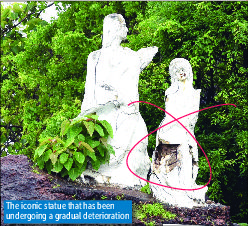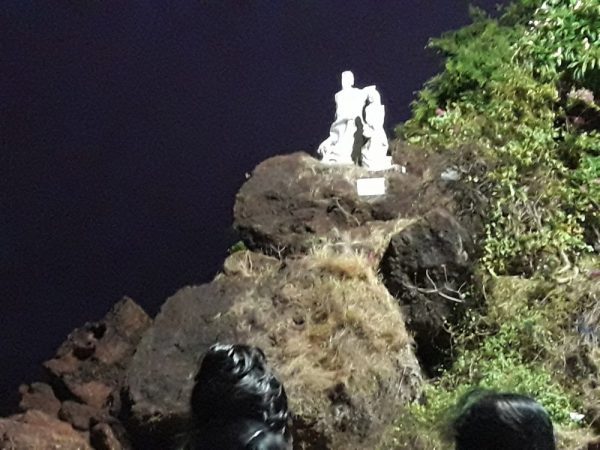The iconic statue of Dona Paula is on the verge of crumbling! It has developed massive cracks and some portions have already fallen. Who is responsible for its repair? The authorities seem to be passing the buck saying that the maintenance of the statue is not their responsibility.

Whose responsibility is it?
After visiting the ruins, Team Herald contacted Goa Tourism. They were informed that “Only the garden and jetty were under them”. Similarly, when GTDC (Goa Tourism Development Corporation) was contacted they said, “it was not their job and the maintenance of the statue was looked after by GSIDC”. When contacted, GSIDC revealed that the entire project was transferred to the IPSCDL (Imagine Panaji Smart City Development Ltd.). “Why is the Smart City not taking the responsibility when they own the project?,” GSIDC Managing Director Srinet Kotwale said. However, when contacted, IPSCDL denied this stating that “their project is redevelopment and not maintenance of the statue”.
Negligence on the part of the authorities has led to the deterioration of the iconic symbol of love. People, historians and history lovers have been raising concern over the upkeep of the famous Dona Paula statue for many years.
All is not lost
According to historian Prajal Sakhardande, “Today there are techniques wherein the statue can be brought back to original condition by reconstructing it”. Sakhardande said that the statue has been in a dilapidated condition for the last five years and the authorities have failed to maintain it.
The historical importance of the statues
Though tourists and unsuspecting locals frequent the Dona Paula jetty to relive the fantasy of ‘Dona – Paula’ – the daughter of the then Portuguese Governor and the son of a fisherman who were in love but committed suicide from that point due to the opposition from the girl’s parents. This story is only a myth.
The truth is that these iconic statues of Dona Paula were gifted to Goa by Mr and Mr Robert Knox around the 1930’s. Carved by a famous European sculptress Yrsa Von Leistner, these statues portray an elderly person pointing to the West, and a child looking towards the East wearing European clothing. The sculptress named these statues as ‘The Far East Travellers’, denoting a peer telling his future generation that they had come from the West and wanted to make the Far East their destination.
Shouldn’t our Government preserve our heritage for posterity?



